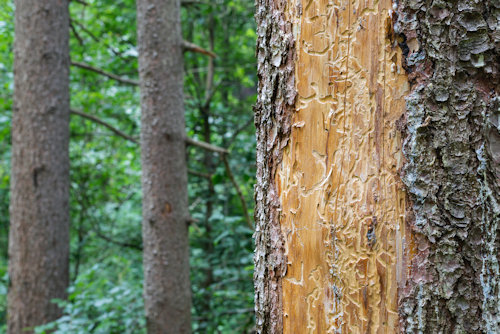What do conifer bark beetles and climate change have in common?
As it turns out, quite a lot. Due to the warming from the year 2000 to the year 2010, the populations of bark beetles around the country (and the world) have exploded. According to reports from 2010, more than 70,000 square miles of beetle kill resulted in those 10 years.
That’s the size of the state of Washington “” and things haven’t gotten much better since then.
What are conifer bark beetles, where do they live, what kind of threat are they, and how can you deal with them? Keep reading to find out everything you need to know today.
What Is the Conifer Bark Beetles Threat?
Losing 70,000 square miles of trees isn’t a blow to only the forests and the US economy, but threatens wildfires on an unprecedented scale during a short window. In fact, California and other states have indeed felt that impact, with many fires raging.
Once a tree is dead and grey, it’s no longer much of a threat. A green dry tree is full of sap, which is an extremely explosive and volatile fuel. The phase where the tree is still full of sap and it’s dry is when it’s red, and also the most prone to contributing.
Despite that, even if there isn’t a fire, the beetle is a threat to our landscapes. Once a bark beetle has gotten a taste for your tree, there’s not much that you can do to save it.
They also bring a fungus with them that their larvae use for food, but is lethal to your conifer.
Where Is the Threat Worst?
West of the Rocky Mountains takes the brunt, but the eastern US isn’t unscathed. A number of bark beetles are also attracted to the coniferous forests and trees here.
Clusters or groups of coniferous trees are called “stands.” They’re especially susceptible, but even individual trees can be blighted by bark beetles. Many species, such as the Spruce Bark Beetle, lay between 10-150 eggs per female. There could be dozens of females in each spruce.
Each conifer bark beetle is slightly different and affects different trees, but shows a bias and preference.
Symptoms of Conifer Bark Beetles
Bark beetles cause pitch tubes. These are usually white if they were unsuccessful to penetrate the tree. There may be several of such white holes as it tried to enter.
Successful attempts are cream to red-colored tubes, due to the dust the bark beetle creates as it burrows.
A tree that has bark beetle hit progressively changes from green to red at the top. Once that’s happened, the tree begins to die from the top down, changing color as it goes.
If it doesn’t have these signs but you know something else is attacking your tree, see if you can find it in our other database of other tree pests.
What to Do About the Conifer Bark Beetle Infestation
There are more natural and eco-friendly approaches than spraying harsh chemicals, such as using the bark beetle pheromones against itself to attract its natural predators.
More likely, though, you’ll have to cut down your tree and debark it or chip it, to help save surrounding conifers. Moving firewood from place to place usually is what introduces new beetle populations. Debarking the firewood before moving it or putting it in a solar oven for a while are effective ways to kill the larvae and beetles.
The best thing you can do is prevention. A professional pest control business with an eco-friendly approach, Planet Friendly Pest Control has you covered in the Southern Maryland area. Contact us today to find out what is best for your coniferous trees.
NEED HELP?
If you live in Southern Maryland, or Northern Virginia
FIND YOUR SOLUTION HERE
People, Pet & Pollinator Safe! Pest control for people who care.
